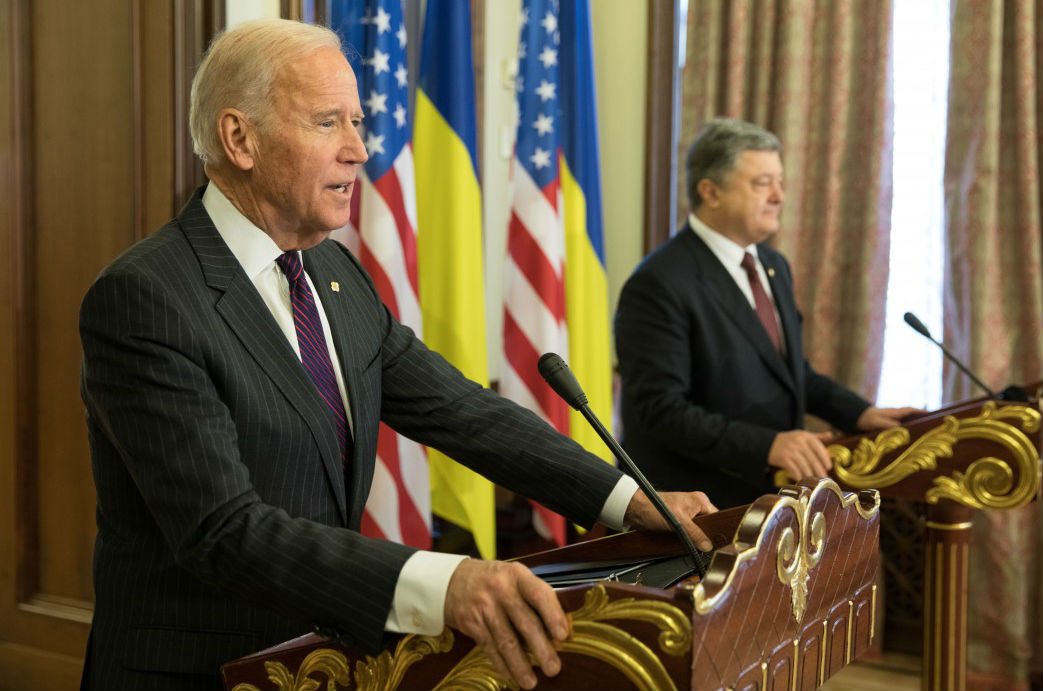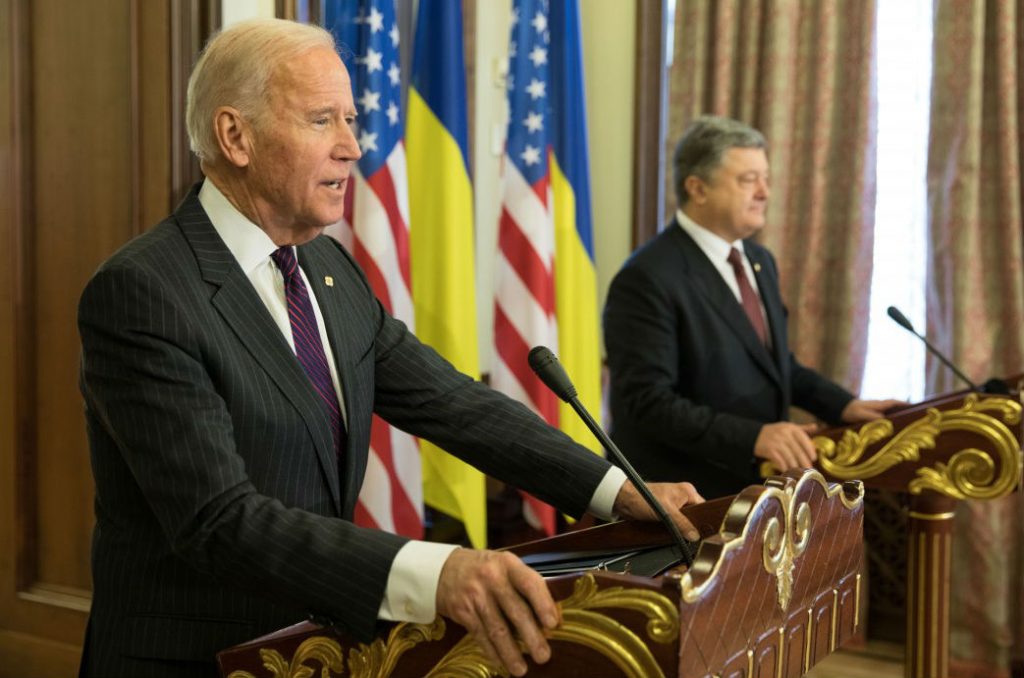 In this week of pre-Trump nervousness, three expats—one American and two Brits—are doing what may seem counterintuitive: launching the Ukraine Business Journal in Kyiv.
In this week of pre-Trump nervousness, three expats—one American and two Brits—are doing what may seem counterintuitive: launching the Ukraine Business Journal in Kyiv.
The goal is simple: provide a clear, factual, English-language window on the business opportunities and obstacles in Ukraine.
We believe the time is right.
Ukraine has a highly educated workforce of forty-two million, pays salaries half those of its competitors in coastal China, and is implementing a new free-trade pact with the European Union. The EU, despite its bad press, is the world’s largest and richest market.
Europe Discovers Ukraine
Europeans are responding by learning geography.
In one overlooked indicator, attendance at the Lviv International Economic Forum last October was five times the previous year. In 2016, as Ukraine’s economy normalized, air traffic jumped by 21 percent, car sales jumped by 41 percent, and stocks of Ukrainian companies traded on Warsaw’s stock exchange jumped by 41 percent.
Construction in Lviv, the unofficial capital of western Ukraine, is so hot that Class A and B office space is to triple by 2020. One generation ago, the extension of NAFTA to Mexico in 1995 resulted in 3,000 assembly plants opening in northern Mexico. Today, on a smaller and more tentative scale, American, European, and Japanese manufacturers are replicating this phenomenon in western Ukraine.
Secret: Ukraine’s Turnaround
Most foreigners are oblivious to Ukraine’s economic turnaround.
“My editor in Moscow told me clearly: he only wants negative news from Ukraine,” a Kyiv-based reporter for an American news agency complained to me over lunch recently.
Indeed, Ukraine’s narrative is defined by the negatives—corruption, fist fights in parliament, and Russian tanks in Ukraine’s far east.
“There are good opportunities across Ukraine,” a British investment scout confided to me last week over tea. “But, given the Trump effect, I can only show them opportunities in Lviv.”
Lviv is safely 1,257 kilometers from Donetsk, the secessionist stronghold. That is a fifteen and a half hour drive, the same time it takes to drive from Boston to Atlanta.
Since the separatist conflict is the elephant in the living room, let’s give it a clear-eyed look. The front lines, frozen in place for two years, are 700 kilometers southeast of Kyiv, the driving distance from Paris to Marseille.
Trump Wobbles?
On January 16, Vice President Joe Biden made a final visit to Kyiv stress US support for Ukraine.
But the inauguration is Friday, January 20. What if President-elect Donald Trump goes wobbly on Ukraine?
As a reporter who covered thirteen wars for The New York Times, I’ve concluded that Ukraine is too big for an American president to throw under the bus in a Yalta II-style deal.
Plus, much has changed since the Kremlin scored its stunning victories in 2014.
The Kremlin has lost the Pearl Harbor factor. After sneak attacks on Crimea and in the east, Russia no longer enjoys the element of surprise.
Three years after the 2014 assaults, Vladimir Putin now faces Europe’s second largest land armed forces. Partly trained by Western advisers, the Ukraine Army has grown to 300,000 and now is backed by the 50,000-member National Guard. Behind that, stands one of the world’s top ten weapons industries.
Risk to Russia
On the civilian front, Putin’s military attacks have created rare levels of nationalism and anti-Russian sentiment across Ukraine.
Ukraine’s military has the separatists bottled up in 3 percent of Ukraine’s national territory.
There, they survive only due to Russian weapons supplies and military officers.
All things being equal, Ukraine’s separatist conflict gradually will degrade into a standoff similar to the ones the Kremlin maintains in the South Caucasus and Moldova.
Focus on Business
In contrast, the focus of the Ukraine Business Journal is on the 97 percent of Ukraine that works.
For Ukraine, the game changer is the EU free-trade pact that went into effect one year ago.
European investors gradually are realizing that right in their neighborhood stands an alternative to China.
According to Sea Distances, a shipping website, it takes a container forty-five days, moving at ten knots an hour, to cover the 10,778 nautical miles between Shanghai and Hamburg. Moving by truck, that same container can go from Lviv to Hamburg in one day, massively slashing costs for inventory and logistics.
For face to face business, Lufthansa makes the flight from Munich to Lviv in one hour and forty-five minutes. Lufthansa’s direct flight from Munich to Shanghai is seven times longer—12 hours and 20 minutes. One time zone away, western Ukraine offers more German speakers than in all of China.
Please Keep Ukraine a Secret
“Don’t tell my competitors—let them keep flying to China,” a French tech company executive told me with a chuckle as he flew home to Paris for the weekend, after overseeing outsourcing work in Kyiv.
The lure of the EU’s massive market, with its 508 million consumers, explains why China is investing up to $4 trillion dollars in ports, highways, and railroads in east-west lines between China and Europe. The goal is to deliver one container from Shanghai to the EU in two weeks. Now, it takes one month for that container to go by rail from Shanghai to Berlin.
After China’s exports dropped by 7.7 percent in 2016, Beijing is eager to keep European consumers happy. China Railway Corporation just announced that a new freight train will arrive in London on January 20 with two hundred containers, making the trip from a factory city near Shanghai in a record sixteen days.
Free Market Reforms Support Free Trade
Ukraine’s free trade with the EU comes with a big support package. Today, the EU, the IMF, the World Bank, and the US Embassy in Kyiv are on the same page. The price tag for Western aid is real reform. Every few weeks, an IMF mission flies into Kyiv and checks the latest laundry list of reform. No reform, no aid.
Currently, Ukraine seems to be moving slowly in the right direction, although corruption remains a persistent problem.
But history shows that high corruption does not rule out economic growth. Just look at the United States in the late nineteenth century.
Growth Ahead
Last year, Ukraine’s economy grew by 1.5 percent. For 2017, the World Bank forecasts 2 percent growth and 3 percent for 2018.
On January 13, the National Bank of Ukraine released its quarterly survey of business leaders across Ukraine. Respondents predicted strong growth for western Ukraine. Separately, analysts interviewed by the UBJ estimate that the economy of Lviv oblast grew by 6 percent in 2016.
The Ukraine Business Journal, with reporters in Dnipro, Kharkiv, Kyiv, Lviv, and Odesa will be covering Ukraine’s economic growth, its investors, its success stories—and its setback. Delivered digitally to smartphones, laptops, and desktops, the UBJ is free this week and to subscribers after January 23.
Despite understandable uncertainties in Washington, the view in Kyiv is that we have the wind to our backs.
James Brooke, a veteran foreign correspondent for The New York Times and Bloomberg Moscow, is editor in chief of the Ukraine Business Journal.
Image: US Vice President Joe Biden meets with Ukraine President Petro Poroshenko on January 16, 2017. Credit: Presidential Administration of Ukraine
